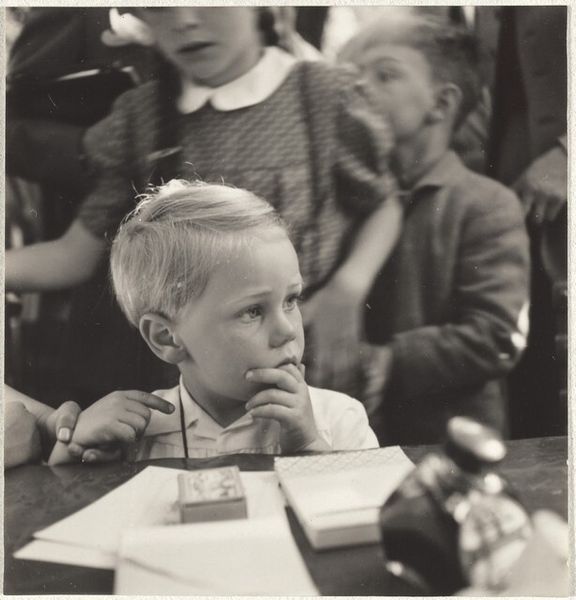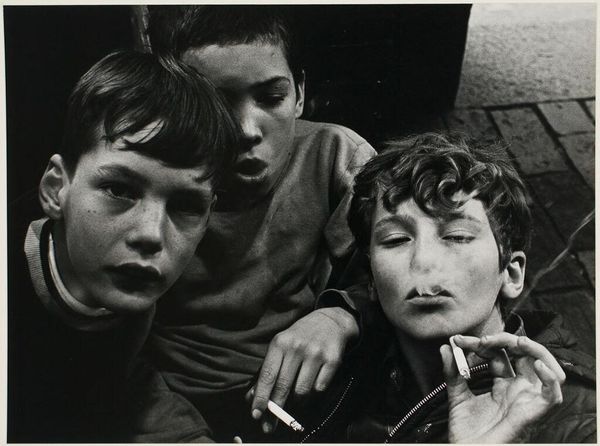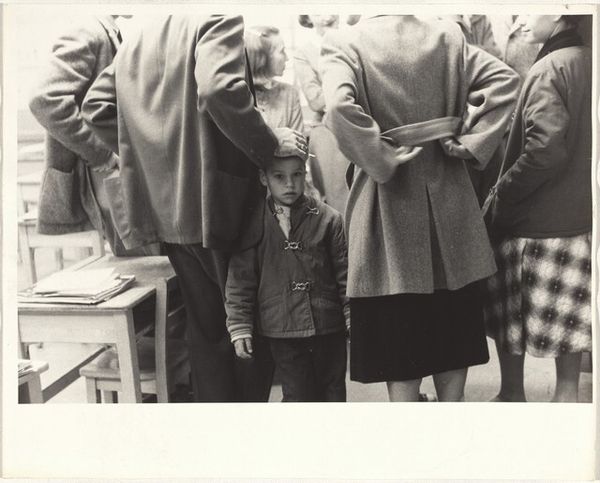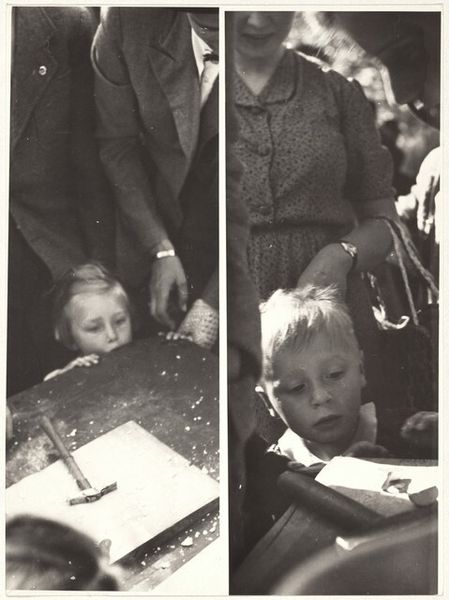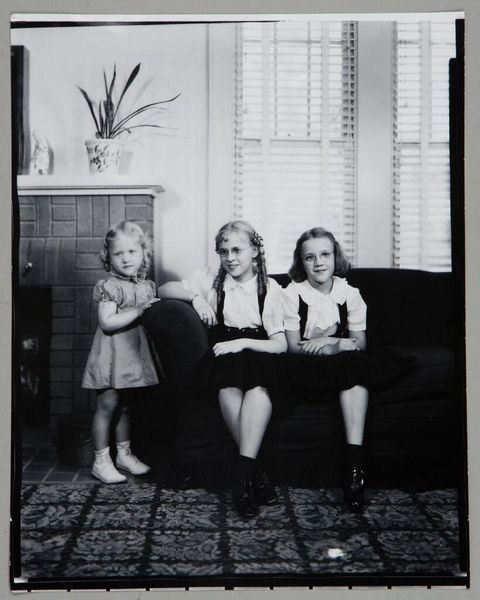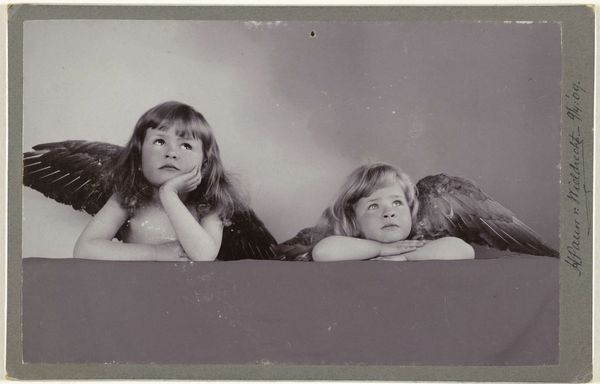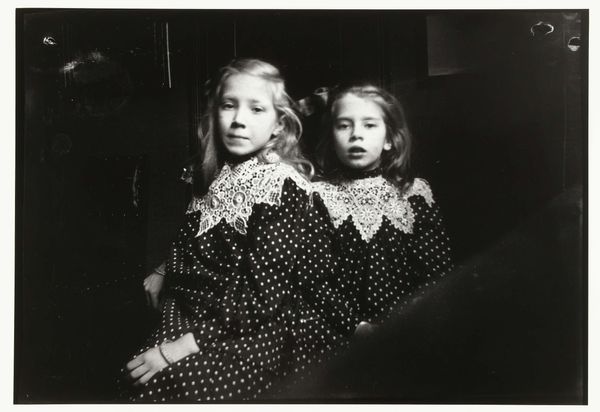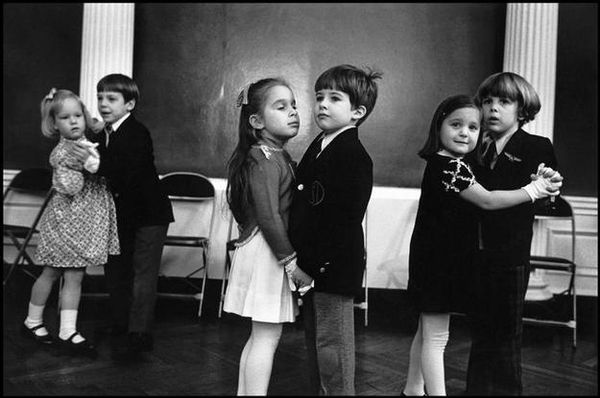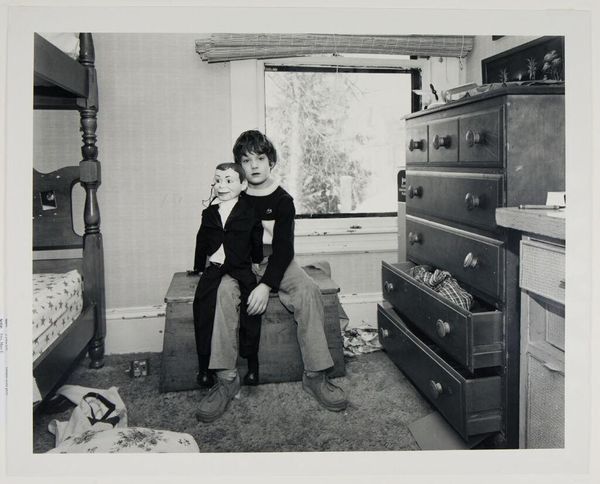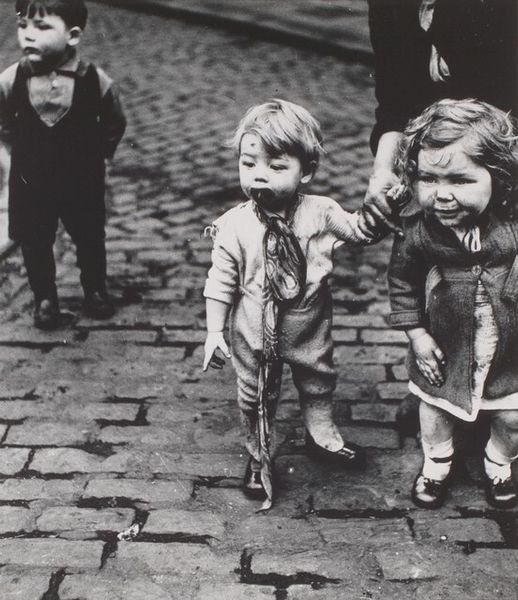
photography, gelatin-silver-print
#
portrait
#
black and white photography
#
black and white format
#
archive photography
#
street-photography
#
photography
#
historical photography
#
black and white theme
#
group-portraits
#
black and white
#
gelatin-silver-print
#
monochrome photography
#
modernism
#
realism
Dimensions: image/sheet: 31.1 × 26.1 cm (12 1/4 × 10 1/4 in.)
Copyright: National Gallery of Art: CC0 1.0
Curator: Esther Bubley's 1942 gelatin-silver print, "Children at Church, Washington, DC," captures a poignant moment of young individuals seemingly waiting for a church service to begin. What's your immediate reaction to this piece? Editor: The contrast is what immediately grabs me – the sharp light and dark areas create such a textured feeling. You can almost feel the stiff wool of their coats and the cool smoothness of the paper they're holding. There's something quite material about this capture. Curator: Indeed, Bubley's photograph is powerful, and in considering the historical context, particularly during wartime America, it reflects themes of innocence, anxiety, and the pervasive impact of larger societal forces on the everyday lives of children. We have to acknowledge this framing when discussing it, not merely an 'art object.' Editor: I agree. The work has that period look – the clothes, the paper pamphlets, and yes, the children's postures give insight into wartime pressures on the very young. But look at their garments! Such specific fabrics—the woven nature communicates to me an economy of labour: someone's care to weave and sew those clothes, even during war rationing. Curator: Absolutely. Furthermore, these children likely have an acute awareness of gendered roles, both inside and outside the home. What expectations were placed upon them simply due to their identities in 1942, influenced how they were parented? Editor: A good point, considering. And it gets back to production for me: Even the paper handouts that are distributed; everything visible hints to different kind of labours that structured this image to being. There’s nothing spontaneous here. Curator: Precisely. Bubley, while working for the FSA, or later for Standard Oil, always presented a strong argument regarding race and class in her art. This piece prompts reflection on how children, regardless of race or class, were socialized within distinct environments in a segregated society and their individual ability to confront such an established bias. Editor: So well said. This conversation illuminates a fascinating connection; what initially seems like just a captured moment also illuminates a wider perspective on class, race, material culture, and what it all meant to society at that time. Curator: Thank you. For me, revisiting it reminds me that any artwork serves as a lens for contemporary discussions, hopefully promoting discourse about identity and social equality through both our lenses.
Comments
No comments
Be the first to comment and join the conversation on the ultimate creative platform.
